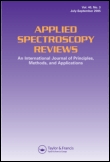
APPLIED SPECTROSCOPY REVIEWS
Scope & Guideline
Unveiling Insights in Spectroscopy and Instrumentation
Introduction
Aims and Scopes
- Spectroscopic Techniques Development:
The journal focuses on the advancement and optimization of various spectroscopic techniques such as Raman spectroscopy, FTIR, laser-induced breakdown spectroscopy (LIBS), and others, highlighting innovations in instrumentation and methodology. - Applications in Biomedical and Pharmaceutical Fields:
A significant portion of the published work explores the application of spectroscopy in biomedical research, including disease diagnosis, drug analysis, and the characterization of biological materials. - Environmental and Industrial Applications:
The journal covers the utilization of spectroscopic methods in environmental monitoring, pollution assessment, and industrial process control, emphasizing their role in sustainability and safety. - Integration with Chemometrics and Machine Learning:
There is a consistent focus on the integration of spectroscopic techniques with chemometric methods and machine learning for enhanced data analysis and interpretation. - Emerging Contaminants and Novel Materials:
Research that delves into the detection and analysis of emerging contaminants, as well as the development of new materials for spectroscopic applications, is a recurring theme.
Trending and Emerging
- Multimodal Spectroscopy Approaches:
There is a growing trend towards the integration of multiple spectroscopic techniques to enhance analytical capabilities, particularly in complex samples in biomedical and environmental contexts. - Real-Time and In-Situ Monitoring:
Research focusing on real-time and in-situ monitoring applications of spectroscopy is on the rise, especially in environmental sensing and industrial processes, reflecting a need for immediate data acquisition. - Nanomaterials and Surface-Enhanced Techniques:
The application of nanomaterials, particularly in surface-enhanced Raman spectroscopy (SERS), is increasingly prominent, showcasing advancements in sensitivity and detection limits for various analytes. - Focus on Health and Disease Diagnostics:
There is an expanding emphasis on the use of spectroscopy for health-related applications, including disease diagnostics and monitoring, underscoring the relevance of these techniques in clinical settings. - Sustainability and Green Chemistry Applications:
Research that emphasizes sustainability and environmentally friendly methods within spectroscopy, including green chemistry approaches, is gaining momentum, reflecting broader societal concerns.
Declining or Waning
- Traditional Spectroscopy Applications in Non-Environmental Contexts:
There appears to be a waning interest in traditional applications of spectroscopy that do not align with current environmental concerns or industrial advancements, as newer, more relevant applications gain traction. - Basic Theoretical Studies:
The journal has seen a reduction in purely theoretical studies or reviews that do not connect directly with practical applications, indicating a shift towards more applied research. - Single-Modality Spectroscopy:
Research focusing solely on single-modality spectroscopic techniques, without integration into multimodal approaches, seems to be declining as the field moves towards more comprehensive, multi-faceted methodologies.
Similar Journals

LASER PHYSICS
Connecting Scholars through Cutting-edge Laser ResearchLASER PHYSICS is a premier academic journal published by IOP Publishing Ltd, dedicated to the exploration and advancement of fundamental and applied research in the fields of Atomic and Molecular Physics, Optics, Condensed Matter Physics, Industrial and Manufacturing Engineering, and Instrumentation. Since its inception in 1996, the journal has been a vital resource for researchers and professionals, contributing significantly to the collective understanding of laser technology and its applications. With a consistent Q3 ranking across several sub-disciplines in the 2023 categories, LASER PHYSICS is recognized for its rigorous peer-reviewed articles that push the boundaries of current knowledge. Although primarily subscription-based, the journal aims to disseminate high-quality research to enhance the scientific community's collaboration. As the journal continues to shape the future of laser science until 2024 and beyond, it stands as an essential platform for both emerging and established scholars seeking to publish innovative findings in this dynamic field.

OPTICS AND SPECTROSCOPY
Advancing Knowledge in Atomic and Molecular PhysicsOptics and Spectroscopy is a pivotal peer-reviewed journal published by Pleiades Publishing Inc, focusing on the intricate fields of atomic and molecular physics, as well as optics. Established in 1972, and enjoying a legacy of convergence periods that reinforce its commitment to the evolving landscape of these scientific domains, the journal aims to disseminate high-quality research that advances our understanding of light-matter interactions, electronic materials, and spectroscopic techniques. Despite its current Q4 categorization in both the Atomic and Molecular Physics and Electronic, Optical and Magnetic Materials fields, with corresponding Scopus rankings reflecting its developing influence, the journal remains a valuable resource for researchers and professionals seeking to publish their findings, explore new methodologies, and connect with a community dedicated to innovation in optics. Although there is currently no open access option, the journal's expansive readership and its stability in publication over the decades make it an important platform for both established and emerging researchers in the field.
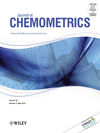
JOURNAL OF CHEMOMETRICS
Transforming Data into Discoveries in ChemometricsJOURNAL OF CHEMOMETRICS is a prestigious journal published by Wiley that has been a cornerstone in the fields of analytical chemistry and applied mathematics since its inception in 1992. With an ISSN of 0886-9383 and an E-ISSN of 1099-128X, this journal occupies a notable position, reflected in its Scopus rankings where it holds the 90th rank in Applied Mathematics and the 56th rank in Analytical Chemistry. The journal, based in the United Kingdom, spans a converged publication timeline through 2024, meticulously exploring the interplay between chemical data analysis and mathematical methodologies. Though currently not open access, it offers essential insights through high-quality research articles that significantly contribute to advancing the understanding of chemometric techniques and their applications. With an impact factor demonstrating robust academic recognition, the JOURNAL OF CHEMOMETRICS serves as an invaluable resource for researchers, professionals, and students aiming to excel in the ever-evolving landscape of chemical data interpretation.

ATOMIC SPECTROSCOPY
Catalyzing Breakthroughs in Analytical Chemistry.ATOMIC SPECTROSCOPY is a distinguished journal specializing in the field of spectroscopy and published by ATOMIC SPECTROSCOPY PRESS LTD. With ISSN 0195-5373 and e-ISSN 2708-521X, this journal has been a cornerstone in advancing the discipline since its inception, thriving in its relevant domain for over four decades, covering converged research years from 1980 to 1989 and from 1996 to 2024. Currently holding a Category Quartile of Q2 in Spectroscopy for 2023, ATOMIC SPECTROSCOPY ranks 34th among 76 in its field according to Scopus, placing it in the 55th percentile, thereby affirming its critical role as a resource for researchers, professionals, and students alike. This journal serves as a platform for disseminating innovative research, methodological advancements, and breakthroughs in atomic and molecular spectroscopy, fostering a comprehensive understanding that is essential for progress in analytical chemistry and related disciplines. While it operates under a non-open access model, the journal ensures broad reach and visibility within the academic community. For those passionate about spectroscopy, ATOMIC SPECTROSCOPY remains an invaluable resource for staying updated on the latest developments, contributing to its reputation as a leading journal in the field.

APPLIED PHYSICS B-LASERS AND OPTICS
Fostering Interdisciplinary Insights in OpticsApplied Physics B - Lasers and Optics, published by Springer Heidelberg, is a renowned journal in the field of applied physics, particularly focusing on lasers and optical technologies. With a solid impact factor, this journal has established itself as a significant source of cutting-edge research, contributing to advancements in both theoretical and practical aspects of the discipline. The journal is indexed in Scopus, boasting a commendable rank of #24 out of 81 in the category of Physics and Astronomy (miscellaneous), reflecting its reputation and the quality of published work. Since its inception in 1994, Applied Physics B has covered a wide array of topics, catering to researchers, professionals, and students engaged in the exploration of innovative optical phenomena and laser applications. This journal not only disseminates vital knowledge but also fosters interdisciplinary collaboration, making it an essential resource for those seeking to stay at the forefront of research in lasers and optics.
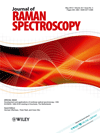
JOURNAL OF RAMAN SPECTROSCOPY
Transforming scientific understanding through Raman innovation.JOURNAL OF RAMAN SPECTROSCOPY, published by WILEY, is a leading journal dedicated to advancing the field of Raman spectroscopy and its applications across diverse scientific disciplines. With an impact factor reflective of its esteemed reputation, this journal positions itself in the Q2 category for both Materials Science and Spectroscopy in the 2023 rankings, demonstrating its relevance and contribution to these fields. Since its inception in 1973, it has consistently provided a platform for innovative research, offering valuable insights and methodologies to researchers, professionals, and students alike. The journal caters to a global audience and includes peer-reviewed articles that encapsulate groundbreaking findings and evolving trends in spectroscopy, enriching our understanding and implementation of this vital analytical technique. While it does not offer Open Access options, its content is accessible through institutional subscriptions, ensuring broad dissemination in the scientific community. By bridging theoretical knowledge and practical applications, the JOURNAL OF RAMAN SPECTROSCOPY plays a pivotal role in shaping the future of materials analysis and characterization.

SPECTROSCOPY AND SPECTRAL ANALYSIS
Exploring Innovative Techniques in Spectral AnalysisSPECTROSCOPY AND SPECTRAL ANALYSIS is a pivotal journal published by the OFFICE SPECTROSCOPY & SPECTRAL ANALYSIS in China, dedicated to advancing the field of spectroscopy and its associated techniques. With an ISSN of 1000-0593, this journal provides a platform for researchers, professionals, and students to disseminate innovative studies and findings related to spectroscopy, covering various applications from fundamental research to technological advancements. Although it currently stands in the Q4 quartile for both Instrumentation and Spectroscopy as per the 2023 categorization, it continues to play a crucial role in fostering dialogue and collaboration within the scientific community. The journal features contributions that explore the latest methodologies and applications, making it a valuable resource for those aiming to deepen their understanding and application of spectroscopic techniques. It operates within a competitive landscape, ranked at the 16th percentile in Chemistry (Spectroscopy) and 15th percentile in Physics and Astronomy (Instrumentation), which underscores its targeted influence in these fields. Interested readers can access the journal to stay informed about pioneering research, helping to bridge the gap between theoretical insights and practical applications.
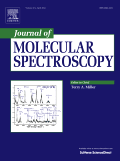
JOURNAL OF MOLECULAR SPECTROSCOPY
Transforming Understanding with Spectroscopic TechniquesJOURNAL OF MOLECULAR SPECTROSCOPY, published by Academic Press Inc Elsevier Science, serves as a pivotal platform in the fields of Atomic and Molecular Physics, Physical and Theoretical Chemistry, and Spectroscopy. With its inaugural issue dating back to 1957, this journal has maintained a rich history of disseminating significant research findings, contributing to an understanding of molecular behavior and interactions through various spectroscopic techniques. Although currently positioned in the Q3 quartile across its respective categories as per 2023 rankings, the journal aims to enhance its stature further by promoting rigorous and impactful studies that push the boundaries of knowledge in spectroscopy. While access to this publication is not open, the rigorous peer-review process ensures that the articles published maintain high standards of scientific excellence, appealing to researchers, professionals, and students seeking comprehensive insights into molecular spectroscopy. The journal's ISSN is 0022-2852 and its E-ISSN is 1096-083X.
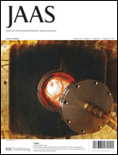
JOURNAL OF ANALYTICAL ATOMIC SPECTROMETRY
Empowering Researchers with Cutting-Edge Spectroscopic Techniques.JOURNAL OF ANALYTICAL ATOMIC SPECTROMETRY, published by the esteemed Royal Society of Chemistry, stands as a vital resource in the fields of Analytical Chemistry and Spectroscopy. Since its inception in 1971, this journal has been committed to disseminating cutting-edge research, offering an invaluable platform for the presentation of quantitative and qualitative analytical methods. With an impressive impact factor and a current classification in the Q2 category of both Analytical Chemistry and Spectroscopy, it significantly contributes to the advancement of knowledge in these disciplines. Researchers, professionals, and students looking to deepen their understanding of atomic spectrometry will find a wealth of innovative studies, reviews, and methodological papers that consistently push the boundaries of traditional and emerging analytical techniques. Although not an open-access journal, it provides accessible options that facilitate the engagement of a broad academic audience, ensuring that vital research is not confined solely to institutional repositories. The journal's exceptional standing, demonstrated by its strong Scopus rankings, further underscores its critical role in the scholarly communication landscape.
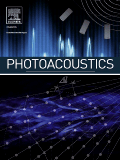
Photoacoustics
Illuminating Innovations in Imaging and SensingPhotoacoustics, published by ELSEVIER GMBH, stands as a prominent open access journal in the realm of Physics and Medicine, particularly since its establishment in 2013. Located in Munich, Germany, this journal has garnered significant attention, achieving a distinguished Q1 ranking in both Atomic and Molecular Physics, and Optics and Radiology, Nuclear Medicine and Imaging, as of 2023. With an impressive Scopus ranking of #19 out of 333 in Radiology and #21 out of 224 in Physics, it proudly sits in the top percentiles of its categories, demonstrating its vital contribution to these fields. The journal's scope encompasses the interdisciplinary domain of photoacoustic imaging and sensing, making it a critical resource for researchers and professionals seeking the latest innovations and applications in this cutting-edge technology. As an open access publication, Photoacoustics ensures that high-quality research is readily accessible to a global audience, fostering collaboration and advancing knowledge in the scientific community.